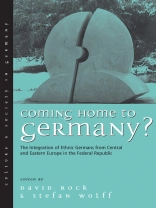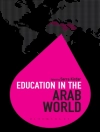The end of World War II led to one of the most significant forced population transfers in history: the expulsion of over 12 million ethnic Germans from Central and Eastern Europe between 1945 and 1950 and the subsequent emigration of another four million in the second half of the twentieth century. Although unprecedented in its magnitude, conventional wisdom has it that the integration of refugees, expellees, and Aussiedler was a largely successful process in postwar Germany. While the achievements of the integration process are acknowledged, the volume also examines the difficulties encountered by ethnic Germans in the Federal Republic and analyses the shortcomings of dealing with this particular phenomenon of mass migration and its consequences.
Jadual kandungan
Introduction: From Colonists to Emigrants: Explaining the ‘Return-Migration’ of Ethnic Germans from Central and Eastern Europe
Stefan Wolff
PART I: REFUGEES, EXPELLEES AND AUSSIEDLER IN THE FEDERAL REPUBLIC OF GERMANY: HISTORICAL, SOCIAL, POLITICAL AND LEGAL DIMINESIONS OF THE INTEGRATION PROCESS
Chapter 1. Integrating Ethnic Germans in West Germany: The Early Postwar Period
Daniel Levy
Chapter 2. The Struggle of Past and Present in Individual Identities: The Case of German Refugees and Expellees from the East
Rainer Schulze
Chapter 3. Expellee Policy in the Soviet-occupied Zone and the GDR: 1945–1953
Philipp Ther
Chapter 4. The Integration of Ethnic Germans from the Soviet Union
Andreas Heinrich
Chapter 5. Jus Sanguinis or Jus Mimesis? Rethinking ‘Ethnic German’ Repatriation
Stefan Senders
Chapter 6. The Decline of Privilege: The Legal Background to the Migration of Ethnic Germans
Amanda Klekowski von Koppenfels
PART II: THE TRANSITION FROM GERMAN MINORITY CULTURE TO THE NATIONAL CULTURE OF GERMANY: ART AS A MEDIUM TO ADDRESS AND EXPRESS THE CHALLENGES OF MIGRATION AND INTEGRATION
Chapter 7. ‘From the periphery to the centre and back again’: An Introduction to the Life and Works of Richard Wagner
David Rock
Chapter 8. ‘… a form of literature which was intentionally political’
Richard Wagner in conversation with David Rock and Stefan Wolff
Chapter 9. Millennium
Richard Wagner
Chapter 10. ‘Alone in a crowd’: The Figure of the ‘Aussiedler’ in the Work of Richard Wagner
Graham Jackman
Chapter 11. A Romanian German in Germany: The Challenge of Ethnic and Ideological Identity in Herta Müller’s Literary Work
John J. White
Chapter 12. Günter Grass: ‘The man who migrated across history
Julian Preece
Chapter 13. From ‘Sudetendeutsche’ to ‘Adlergebirgler’: Gudrun Pausewang’s Rosinkawiese Trilogy
Kati Tonkin
Chapter 14. ‘… for an artist, home will be wherever he can freely practise his art’
Walter Grill in conversation with David Rock
Conclusion: Coming Home to Germany? Ethnic German Migrants in the Federal Republic after 1945
Stefan Wolff
Mengenai Pengarang
David Rock teaches in the Department of Modern Languages at the University of Keele. He also edited Voices in Times of Change (Berghahn, 2000).












